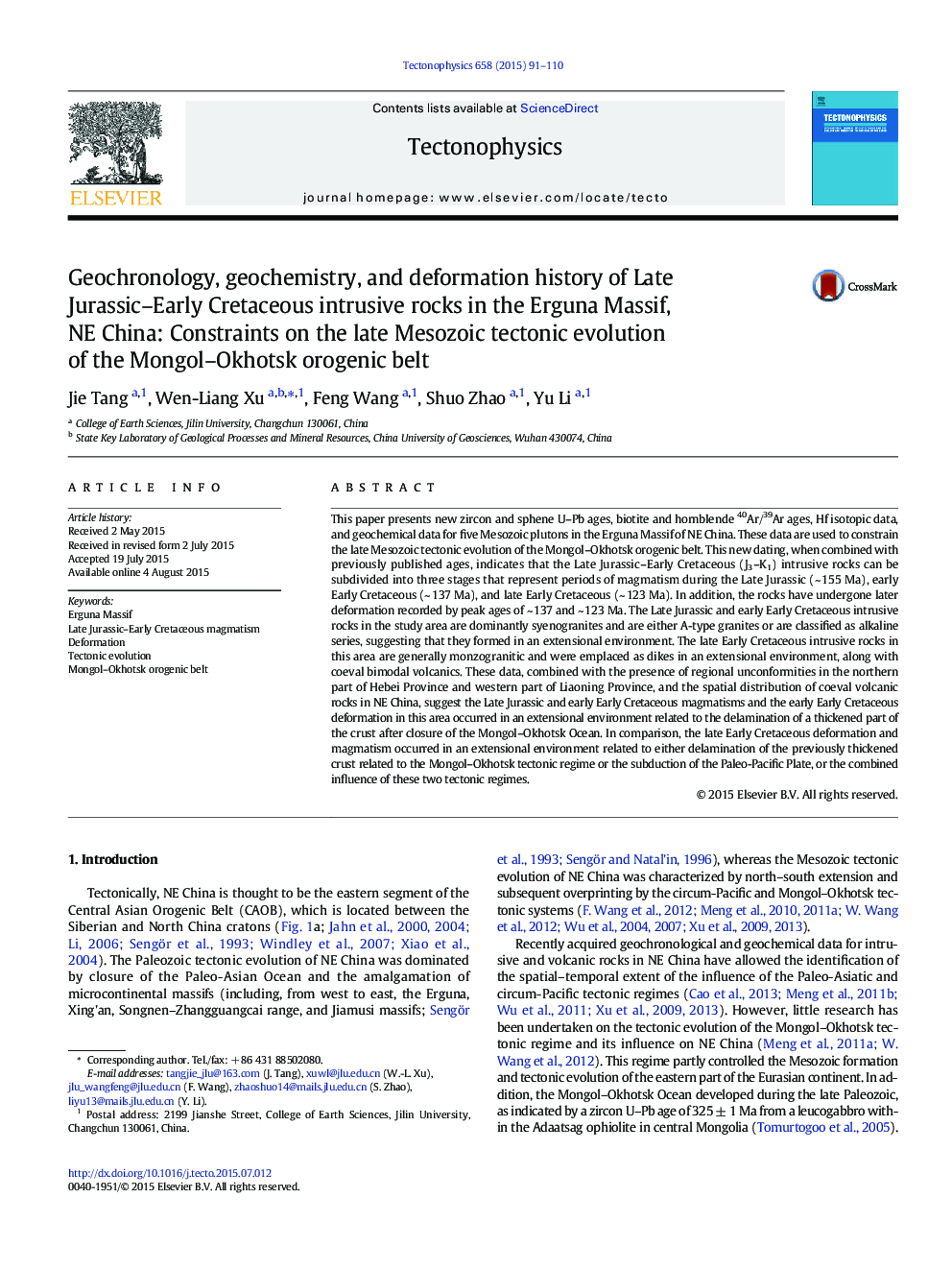| کد مقاله | کد نشریه | سال انتشار | مقاله انگلیسی | نسخه تمام متن |
|---|---|---|---|---|
| 4691529 | 1636737 | 2015 | 20 صفحه PDF | دانلود رایگان |

• J3–K1 magmatic events in the Erguna Massif can be subdivided into three stages.
• J3–K1 intrusive rocks consist mainly of A-type granites and monzonites.
• J3–K1 intrusive rocks underwent two stages of deformations.
• J3–K1 magmatisms and deformations formed in an extensional environment.
This paper presents new zircon and sphene U–Pb ages, biotite and hornblende 40Ar/39Ar ages, Hf isotopic data, and geochemical data for five Mesozoic plutons in the Erguna Massif of NE China. These data are used to constrain the late Mesozoic tectonic evolution of the Mongol–Okhotsk orogenic belt. This new dating, when combined with previously published ages, indicates that the Late Jurassic–Early Cretaceous (J3–K1) intrusive rocks can be subdivided into three stages that represent periods of magmatism during the Late Jurassic (~ 155 Ma), early Early Cretaceous (~ 137 Ma), and late Early Cretaceous (~ 123 Ma). In addition, the rocks have undergone later deformation recorded by peak ages of ~ 137 and ~ 123 Ma. The Late Jurassic and early Early Cretaceous intrusive rocks in the study area are dominantly syenogranites and are either A-type granites or are classified as alkaline series, suggesting that they formed in an extensional environment. The late Early Cretaceous intrusive rocks in this area are generally monzogranitic and were emplaced as dikes in an extensional environment, along with coeval bimodal volcanics. These data, combined with the presence of regional unconformities in the northern part of Hebei Province and western part of Liaoning Province, and the spatial distribution of coeval volcanic rocks in NE China, suggest the Late Jurassic and early Early Cretaceous magmatisms and the early Early Cretaceous deformation in this area occurred in an extensional environment related to the delamination of a thickened part of the crust after closure of the Mongol–Okhotsk Ocean. In comparison, the late Early Cretaceous deformation and magmatism occurred in an extensional environment related to either delamination of the previously thickened crust related to the Mongol–Okhotsk tectonic regime or the subduction of the Paleo-Pacific Plate, or the combined influence of these two tectonic regimes.
Journal: Tectonophysics - Volume 658, 25 September 2015, Pages 91–110